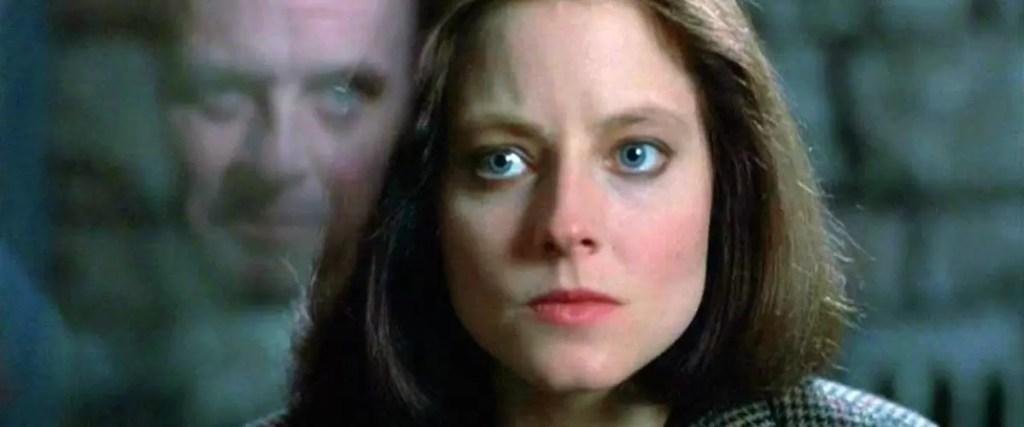The Psychological Horror of ‘The Silence of the Lambs’: A Cinematic Masterpiece
Welcome, movie enthusiasts! Today, we’re diving into the deep and thought-provoking world of psychological horror, and there’s no better example than the cinematic masterpiece that is “The Silence of the Lambs.” This 1991 thriller is a must-watch for any fan of the genre, but its true brilliance lies in its portrayal of the human psyche. In this article, we’ll break down the psychological analysis behind some of the film’s most iconic characters and scenes, exploring why they continue to leave us both terrified and fascinated even decades after its initial release. So grab some popcorn, turn off the lights, and let’s explore the twisted world of “The Silence of the Lambs.”
Welcome, movie enthusiasts! Today, we’re diving into the deep and thought-provoking world of psychological horror, and there’s no better example than the cinematic masterpiece that is “The Silence of the Lambs.” This 1991 thriller is a must-watch for any fan of the genre, but its true brilliance lies in its portrayal of the human psyche. In this article, we’ll break down the psychological analysis behind some of the film’s most iconic characters and scenes, exploring why they continue to leave us both terrified and fascinated even decades after its initial release. So grab some popcorn, turn off the lights, and let’s explore the twisted world of “The Silence of the Lambs.”

Introduction to “The Silence of the Lambs” and its impact on the film industry
“The Silence of the Lambs” is a psychological thriller film that was released in 19 Directed by Jonathan Demme, the film quickly became a cult classic and had a significant impact on the film industry. The movie’s chilling portrayal of a psychopathic killer and the intense mind games between the characters captivated audiences and critics alike. The film’s iconic performances by Jodie Foster and Anthony Hopkins, as well as its skilled direction and cinematography, set a new standard for psychological thrillers in the industry. Even to this day, “The Silence of the Lambs” remains a must-watch for all film enthusiasts, and its influence can still be seen in modern-day movies.
Overview of the main characters and their psychological profiles
“The Silence of the Lambs” is a psychological thriller that revolves around the story of Clarice Starling, a young FBI trainee, and Dr. Hannibal Lecter, a brilliant psychiatrist and cannibalistic serial killer. Clarice is portrayed as a strong-willed and determined character, haunted by her past, which drives her to solve the case of a missing woman. On the other hand, Dr. Lecter is depicted as a manipulative and intelligent individual, who uses his extensive knowledge of human behavior to get inside Clarice’s head. The psychological profile of these two main characters is complex, with Clarice struggling with her own demons while trying to maintain her composure and Dr. Lecter using his charm and wit to control those around him. As the story progresses, their psychological game of cat and mouse intensifies, making “The Silence of the Lambs” a true classic in the psychological thriller genre.
The role of trauma in the development of Hannibal Lecter’s psychopathy
The character of Hannibal Lecter in “The Silence of the Lambs” is one of the most iconic examples of psychopathy in cinema history. One of the key factors that shaped his psyche was undoubtedly the trauma he experienced as a child. As depicted in the film, Lecter witnessed the brutal murder of his younger sister and was subsequently subjected to years of abuse in an orphanage. Such experiences are believed to have contributed to his lack of empathy and his warped sense of morality, as well as his exceptional intelligence and ability to manipulate those around him. Thus, the role of trauma in the development of Hannibal Lecter’s psychopathy cannot be overstated.

The depiction of dissociative identity disorder in the character of Jame Gumb
The depiction of dissociative identity disorder in the character of Jame Gumb in “The Silence of the Lambs” has been a topic of debate since the movie’s release in 19 While some argue that Gumb’s portrayal perpetuates harmful stereotypes and stigmas surrounding mental illness, others argue that it is a realistic depiction of a person living with dissociative identity disorder. Regardless of one’s stance, it can be agreed that the character is a chilling representation of the complexities and challenges faced by those with dissociative identity disorder.
The dynamics of power and control in the relationship between Lecter and Clarice Starling
In “The Silence of the Lambs,” the relationship between Dr. Hannibal Lecter and FBI agent Clarice Starling is one of power and control. Lecter, a brilliant psychiatrist and cannibalistic serial killer, holds all the cards in their interactions. He constantly manipulates and tests Starling, pushing her to reveal personal information about herself and her past traumas. However, despite his attempts to control her, Starling remains steadfast in her determination to catch the killer they both seek. Their dynamic is a truly fascinating exploration of the balance of power in relationships and the ways in which individuals can resist manipulation and maintain agency.
The use of behavioral profiling in solving the case of Buffalo Bill
In “The Silence of the Lambs,” the character of Buffalo Bill has left law enforcement scratching their heads. Enter Dr. Hannibal Lecter, a forensic psychiatrist who helps FBI trainee Clarice Starling understand the psychology behind Bill’s behavior. Together, they use behavioral profiling to narrow down the possible locations of Bill’s lair and ultimately catch him. The use of behavioral profiling in “The Silence of the Lambs” highlights the importance of understanding the motivations and thought processes of criminals in order to bring them to justice.

The representation of gender and sexuality in the film
One of the most fascinating aspects of “The Silence of the Lambs” is its portrayal of gender and sexuality. The film presents a complex and nuanced exploration of these themes, particularly through the character of Buffalo Bill. In his quest for transformation and self-actualization, Buffalo Bill takes on a variety of gendered and sexual identities, highlighting the fluidity and complexity of these concepts. Through the lens of Clarice Starling, the film also examines the ways in which gender and sexuality are often used as tools of power and control, particularly in male-dominated fields like law enforcement. Overall, “The Silence of the Lambs” offers a thought-provoking and nuanced exploration of these important themes, making it a timeless classic of American cinema.
The ethical implications of using incarcerated individuals as sources of information
The Silence of the Lambs is a psychological thriller that explores the twisted mind of a serial killer. The movie portrays the controversial practice of using incarcerated individuals as sources of information, specifically the character of Dr. Hannibal Lecter. Although Dr. Lecter provided valuable insights to the FBI, the ethical implications of this practice cannot be ignored. Using prisoners as sources of information raises questions about the validity of the information obtained, the potential for manipulation, and the exploitation of vulnerable individuals. As viewers, we are left to question the morality of gaining information at the expense of the rights and dignity of incarcerated individuals.
The influence of real-life serial killers on the film’s portrayal of violence
The Silence of the Lambs is a psychological thriller that has managed to captivate audiences for decades. The film’s portrayal of violence is particularly intriguing, as it draws inspiration from real-life serial killers. The character of Hannibal Lecter is said to have been inspired by a real-life murderer who cannibalized his victims. Similarly, the film’s antagonist, Buffalo Bill, is based on other notorious killers such as Ted Bundy and Ed Gein. By drawing inspiration from these real-life figures, the film’s portrayal of violence becomes more unsettling and realistic, leaving a lasting impression on viewers.
Conclusion and reflection on the lasting impact of “The Silence of the Lambs” on pop culture and psychological discourse
In conclusion, “The Silence of the Lambs” remains a timeless classic that has had a profound impact on both pop culture and psychological discourse. Its portrayal of the complex and twisted psyche of a serial killer, as well as the intense psychological cat-and-mouse game between Clarice Starling and Dr. Hannibal Lecter, has captivated audiences for decades. The film’s influence can be seen in countless movies and TV shows that have followed in its footsteps, as well as in the ongoing discussions and debates around the topics of criminal psychology and mental illness. Truly, “The Silence of the Lambs” is a masterpiece that continues to inspire and challenge audiences to this day.
For more information about The Silence of the Lambs psychological analysis, including movie details, cast information, etc..
check out the filmaffinity page.



